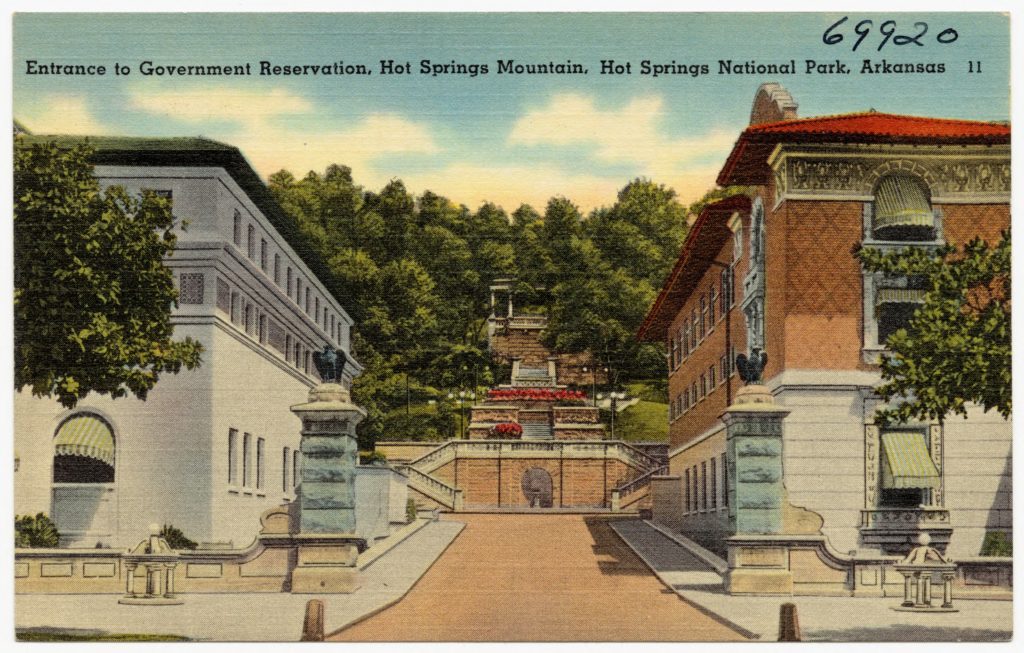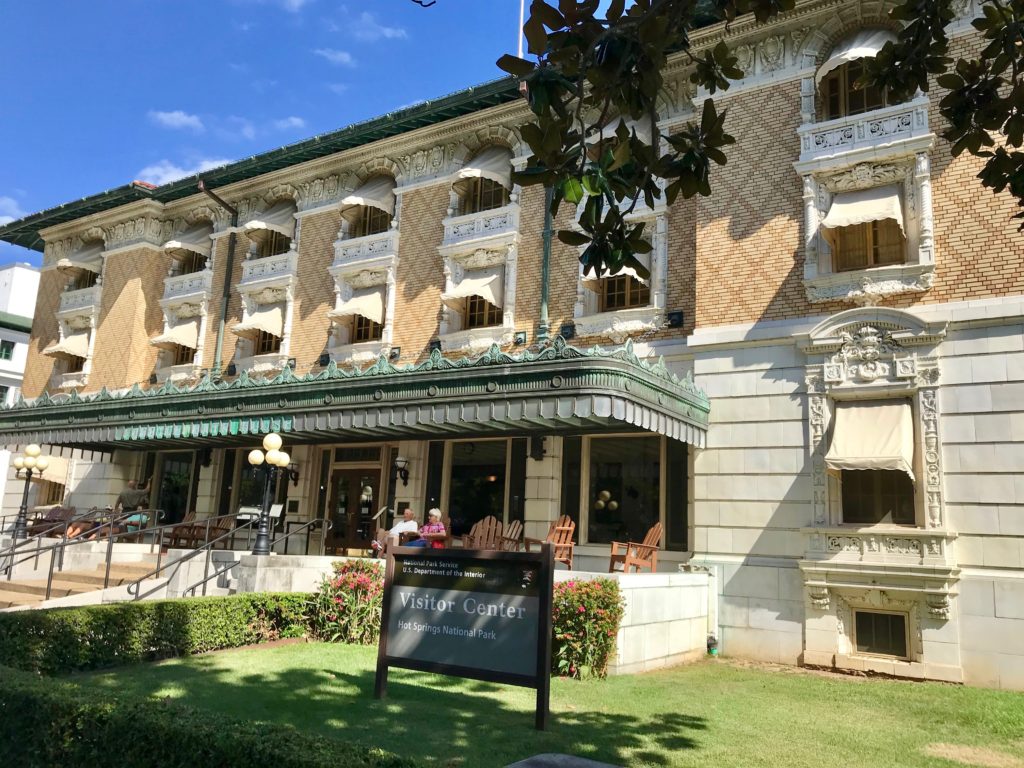Hot Springs National Park, established on March 4, 1921, can claim a number of records. It is the smallest national park, covering only about 5,500 acres. It is the only national park located within a city—in fact, it comprises a good deal of the historical area of the city of Hot Springs, Arkansas. But here’s the biggee: It is the oldest national park in the country—predating Yellowstone, which is universally declared the world’s first national park, by 40 years!

That last assertion begs for explanation. What is now Arkansas became part of the United States through the Louisiana Purchase in 1803. Soon after, President Jefferson sent an expedition to explore the southern reaches of the purchase. In Arkansas, the expedition found springs flowing out of a mountain and stayed for the Christmas season of 1804. The 47 springs were—and are—producing 700,000 gallons per day at the uniform temperature of 143 degrees F.
Native Americans had lived in the area for thousands of years, but the population had declined greatly. And as settlers came from the East, the U.S. government signed a treaty in 1818 that made the entire area federal property. New residents realized that the springs might have medicinal qualities that could be exploited commercially and began making claims of ownership against the government. To protect the land, the Arkansas Territorial government asked that the U.S. make the springs a national reserve. They got their way on April 20, 1832, when President Andrew Jackson, who knew and loved the area, signed the park into law, reserving the area “for the future disposal of the United States (which) shall not be entered, located, or appropriated, for any other purpose whatsoever.” The park moved through several agencies and was enlarged as the decades passed. Eventually, after the National Park Service was created in 1916, the reserve was re-christened as Hot Spring National Park on March 4, 1921.

It is a strange little park. It now includes Hot Springs Mountain, the source of the hot waters and the springs themselves. The springs were once uncontrolled, spilling hot water into muddy ponds and ditches, but now all are capped and piped to prevent pollution and over-use. Although the park is habitat for a few unique plants, the fundamental natural resource it protects is water, hot water. Geologists have established that the hot water reaching the surface has undergone a 4,000-year journey from rainfall on the nearby mountain to groundwater seeping through the heavily fractured bedrock and finally to superheated water arising from deep fissures. The park now includes a wilderness area, but the real reason for its existence is simple: hot water!
Along with the protection has always come use of the hot springs. From the beginning, the park issued licenses to private owners to build public baths that used the water and maintained “freebaths” for use by local indigents. Under design standards created by the government, the bath-houses evolved from early shabby wooden structures to elaborate Victorian spas in the early 1900s. As the therapeutic value of the hot waters grew, so did visitation. Hot Springs became a major tourism city, attracting the good—five major league baseball teams held spring training there—and the bad—the town became the nation’s biggest center of illegal gambling. The popularity of thermal bathing began to decline in the 1950s, and most bathhouses were closed and abandoned.

A restoration effort began in the 1970s when Bathhouse Row was entered into the National Register of Historic Places. Several old spas have been renovated and re-opened for either their original purpose or as other tourist-related businesses. The most palatial of the spas, the Fordyce Bathhouse, is now the park’s museum and visitors’ center. From peak popularity during the 1960s of up to 2 million annual visits, the park has received 1.5 million visitors in recent years.
References:
National Park Service. Hot Springs National Park, History & Culture. Available at: https://www.nps.gov/hosp/learn/historyculture/index.htm. Accessed March 1, 2109.
Shugart, Sharon. 2003. Hot Springs National Park, a Brief History of the Park. National Park Service. Available at: https://www.nps.gov/hosp/learn/historyculture/index.htm. Accessed March 1, 2019.
Shugart, Sharon. 2018. Hot Springs National Park. The Encyclopedia of Arkansas History & Culture. Available at: http://www.encyclopediaofarkansas.net/encyclopedia/entry-detail.aspx?entryID=2547, Accessed March 1, 2019.
